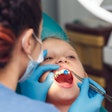
The Hispanic Dental Association and the CareQuest Institute for Oral Health recently released a comprehensive white paper on oral health disparities in Hispanic communities and how they can be addressed.
The authors of the white paper analyzed findings from multiple surveys and worked with over 60 experts in public health, dentistry, and academia to develop recommendations for policy changes to benefit Hispanic communities.
The team highlighted the following results:
- Hispanic people reported higher percentages of being treated for gum disease than other racial/ethnic groups, especially in the 35–49-year-old age group.
- Hispanic children ages 6 to 11 had the highest prevalence of decayed and filled teeth.
- Hispanic adults had a higher prevalence of losing at least one permanent tooth compared to white, non-Hispanic adults.
- About 15% of Hispanic adults ages 65 and over had no teeth.
- In most age groups, Hispanic people were more likely to report the status of their teeth and gums as “fair” or “poor” compared to non-Hispanic individuals.
- Hispanic dentists represent 6% of the total national dentists’ workforce, 10.7% of dental hygienists, 30.4% of dental assistants, and 19.8% of dental laboratory technicians
Recommendations for policy changes include improving data collection and disaggregation to better understand disparities and providing more oral health education for parents and children. Additionally, the paper recommends increasing community-friendly access to dental care opportunities, such as mobile and school-based dental services. Finally, the paper recommends that more career pathway programs be built for minority students going into dental careers and more cultural competency training for dentists.
The full paper can be found on the CareQuest Institute’s website.



















